Women’s Colleges Are Having a Moment
Campus Life
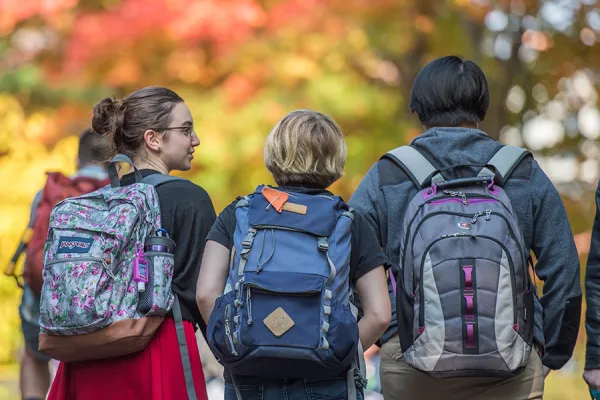
Published September 23, 2019
As a young teenager, Carrie Lee Lancaster ’19 was busy playing basketball at her small-town South Carolina high school. What she wasn’t doing was thinking about a women’s college as an eventual goal.
But then at 16, she went looking for summer opportunities and found a pre-college program at Barnard College in New York City. Lancaster loved being in classes with other women and learning about feminism in an academic setting. Later, when (with her mother’s encouragement) she decided to visit Smith, she was “kind of shocked,” she says, by the many resources available to undergraduates. She admired Smith students’ drive. “I was just so in awe of Smith being focused on helping women be their best in all facets of life,” she says.
Afterward, there was no stopping her. She landed a STRIDE research scholarship, which included work with Carrie Baker, professor of the study of women and gender (SWG), on an analysis of media coverage of child sex trafficking. Study-abroad experiences took Lancaster to India, Argentina, Spain and Geneva, Switzerland. The newly graduated government major is returning to Switzerland this fall for her master’s degree, as part of a joint program between Smith and the Graduate Institute of International and Development Studies in Geneva. She believes Smith helped open the world to her.
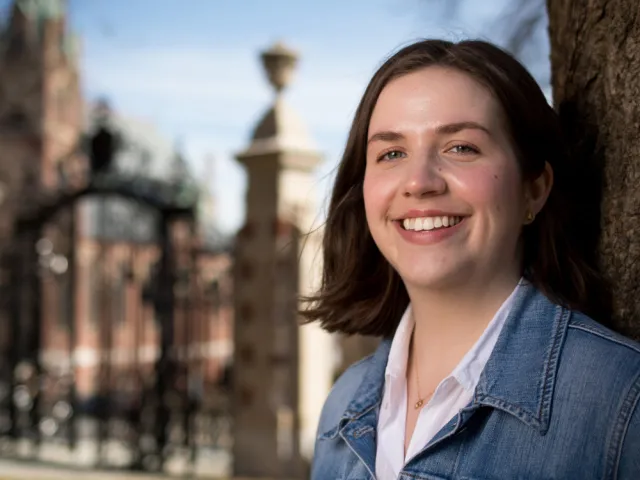
Smith and other women’s colleges are enjoying a boost in applications thanks to students like Carrie Lee Lancaster ’19, who wanted to be at a place that "focused on helping women be their best in all facets of life.”
Lancaster is part of a trend that might surprise those who wondered if women’s colleges were losing relevance. Application rates show that a growing number of high school girls are sold on the idea that a women’s college might be the best place for them. As Audrey Smith, the college’s vice president for enrollment, puts it, “Women’s colleges are having a moment.” Smith is riding the wave. “Our applications have been going up, up, up,” says President Kathleen McCartney. The college received the second-highest number of applications in its history this year at 5,597, surpassed only by last year. Applications to Smith have increased 25% over the past five years. Consequently, Smith has gotten more selective, accepting 32% of applicants for the class of 2022, compared to 42% for the class of 2018. The college is also doing well in that magic number known as yield, or the percentage of admitted students who decide to come to Smith, currently at 35%.
All this makes McCartney understandably happy. “I think prospective students are more educated about the world and want to be at a place that will equip them to be leaders and change-makers,” she says. A rising number of prospects are certain Smith is that place. Early decision applicants, who select Smith as their first choice, are up 32% over the last five years.
For some students, women’s colleges may have risen in importance because of what they perceive as the country’s anti-women climate.
Smith is among many women’s colleges seeing a boost in interest, perhaps reversing a trend that has led some to go coed in recent decades. The number of women’s colleges in the United States and Canada dropped from 64 in 2000 to 38 in 2019. Sweet Briar College in Virginia nearly closed in 2015. Bennett, a historically black college for women in North Carolina that has struggled with declining enrollment, needed a national fundraising campaign to help it stay open in 2019.
Many of the remaining women’s colleges, however, are performing well now, including Smith, Wellesley, Mount Holyoke, Barnard and Bryn Mawr in the Northeast; Agnes Scott and Spelman in Georgia; and Meredith in North Carolina, says Michele Ozumba, president of the Women’s College Coalition (WCC), a membership association.
Five years ago, WCC member colleges collectively received 72,585 applications. For 2018, with only half of member colleges reporting so far, the WCC has already tallied more than 52,000 applications, a jump that suggests the final count “will be significantly higher” than in recent years, Ozumba says.
For some students, women’s colleges may have risen in importance because of what they perceive as the country’s anti-women climate, punctuated by the #MeToo movement, challenges to reproductive rights and a changed world since 2016. “I certainly think the last presidential election made plain what misogyny looks like,” says Stacie Hagenbaugh, director of the Lazarus Center for Career Development at Smith. “It brought to light what women experience every day and made it salient through a presidential candidate.”
Young women see conversations on social media and hear important women in their lives talk about having to refight old battles, whether for abortion rights, racial justice, equal opportunities in the workplace or other issues.
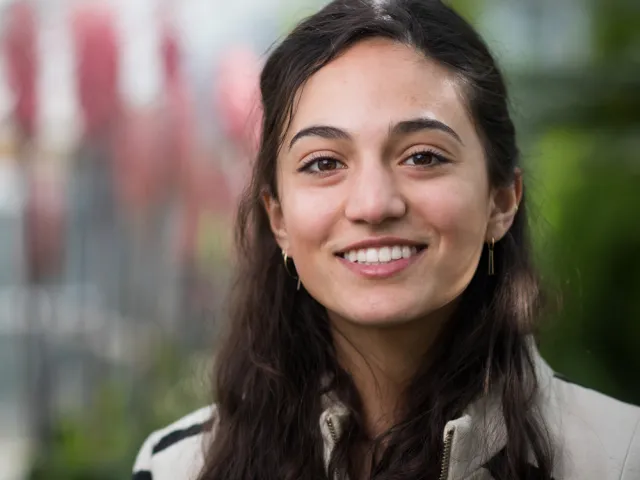
Now a paralegal and liability researcher for a firm involved in pharmaceutical and environmental health cases, Athena Sofides ’19 got her start as a student climate-justice organizer on campus.
Carrie Baker sees the direct effects of the political and social climate in her SWG classes. Enrollment in her 300-level Gender, Law and Policy class rose from 32 students in fall 2016 to 62 in fall 2018. “I call this the Trump effect,” she says. “The students are more engaged on issues of violence against women, LGBTQ rights and reproductive rights than I’ve ever seen them before.”
The record number of women elected to the U.S. House of Representatives in 2018 has given young women new role models for what they can achieve in politics or as activists.
The #MeToo movement may have also contributed to a growing awareness of women’s colleges. Baker knows student survivors of sexual assault who bypassed coed schools because they considered Smith to be safer. Some international students—about 15% of Smith’s student body—may select Smith for its perceived safety.
Women’s college admission officers are seeing these societal changes reflected in admission essays. “We’ve seen a real shift in some of the responses we get on our application,” says Jennifer Fondiller, vice president for enrollment at Barnard College and mother of a junior at Smith. “Students are really pointedly talking about wanting to select Barnard because it’s a women’s college, and the attributes that go along with that.” In the past, she says, students “spoke around it a lot or they spoke about other things but they didn’t hit it head-on like they have been in the last two years.”
Still, the rise of interest in women’s colleges pre-dates the 2016 election. Starting in 2008, Smith had 11 consecutive years of increased applications. Similarly, applications to Barnard College jumped about 40% in the last five years, Fondiller says. “Not all high school students are politically aware, but I think they are very socially aware. For many, it’s like they’ve woken up,” she says. She believes the women’s marches and other social movements have shown students they can speak up about social justice issues, even if they didn’t while in high school.
“I was excited by the idea of an academic environment intentionally designed for gender minority students in higher education.”
Recognizing and developing one’s own power is an important element of a Smith education, McCartney believes. “It’s an interruption or a disruption in what [students] see everywhere else where males lead,” she says. “There’s no implicit bias directed at them, because for the most part, there are only women in the classes. They learn how to hone arguments; they learn how to be leaders.” In a setting where the president of student government, the editor-in-chief of the college newspaper and every other student leadership position is filled by a woman, students discover all the ways that women can lead.
That type of intervention, as McCartney puts it, can help students step forward while at Smith and throughout their lives. Athena Sofides ’19 is a good example. She was a student climate-justice organizer while on campus. Today, she’s a paralegal and liability researcher at a Manhattan law firm involved in pharmaceutical and environmental health cases. She landed the job by emailing the firm to start a conversation. “When I first learned about Smith and the Seven Sisters in general, I was excited by the idea of an academic environment intentionally designed for gender minority students in higher education,” Sofides says. “The intentionality of and focus on historically underrepresented perspectives in academia afforded by a school like Smith definitely made it stand out to me during my college application and decision-making process.”
Gay and gender nonconforming students might gravitate to Smith because of its reputation as a place that welcomes them, a fact reflected in the college’s policy on transgender admissions. (All applicants who identify as female can apply to Smith, and students who transition to male while enrolled may stay at Smith.) Ozumba sees this welcoming attitude as an authentic continuation of the history of women’s colleges, which were created to provide educational access and opportunity for marginalized people. Recent graduate Cai Sherley ’19 agrees.
As they wrote in a recent Facebook post about why nonbinary students specifically seek out women’s colleges, “Just as Smith women pick Smith to not feel defined or penalized for their gender identity in college, so do many trans people. For trans people assigned female at birth, many of us also desired that safety. Smith was founded in response to gender discrimination!”
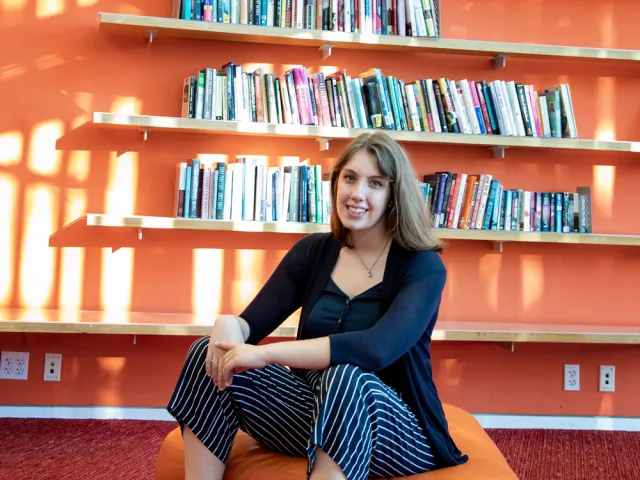
For Faith Wykle ’21, choosing a women’s college was outside the norm of high school culture. Photo: Jessica Scranton
Another major shift is the number of students drawn to Smith for its science offerings. Today, about 38% of Smith students major in a science, up from 26% two decades ago. They include double majors, in sometimes surprising combinations such as dance and chemistry. Students in the class of 2023 named biological sciences, biochemistry, computer science, engineering, economics, English and government among their top choices when asked what they planned to study at Smith. “Our migration into the sciences is following some national trends, but we’re really ahead of the curve for women majoring in the sciences,” says Audrey Smith. She cites the research opportunities available to Smith undergraduates, high admission rates for Smith students to medical and graduate schools, and students’ ability to secure research jobs.
Smith launched the Picker Engineering Program, the first at an all-women’s college, in 2001. It graduated 48 engineers in 2018 and 41 this year. The program appeals to students who want to study engineering in a liberal arts environment, says Director Andrew Guswa. And studying at a women’s college brings an added benefit. At Smith, “We expect engineers to be women. We expect women to lead design projects, work in the machine shop and ask questions. It’s a powerful notion—one that goes beyond merely offering opportunities,” Guswa wrote in Prism, the magazine of the American Society for Engineering Education.
The women’s college difference is apparent in the classroom. Kate Queeney, professor of chemistry, has noticed that when she speaks at co-ed colleges, it’s rare for a female undergraduate to pose a question. After one occasion, she dined with women students and faculty, an extroverted and lively bunch, and asked if they’d noticed male students had dominated the Q&A. The female students, after thinking about it, agreed that was a regular pattern. At Smith, Queeney adds, “It’s women, by and large, asking questions of our speakers.”
An education dedicated to women’s success may, in fact, be a revelation to prospective students. When Faith Wykle ’21 initially toured the college, the guide said Smith students understand their best competition is themselves. “No one ever tells you that, especially as a woman,” Wykle says. “The culture likes to pit women against each other.”
A little maternal guidance may play a role, too, helping high school students overcome their hesitancy about considering a women’s college. Kennedy Barber-Fraser ’19, a history major with an Africana studies minor, for example, was frustrated when boys spoke over her in class, but she was unsure about attending a women’s college until her mom encouraged her in that direction. “Once I visited, I was convinced that Smith was the college for me,” says Barber-Fraser, who enjoyed meeting the coach for the crew team, where she would be a coxswain. “In the first week of school it was pretty incredible to look around the classroom and see women like me and professors who wanted their students to become leaders.”
Deepening her experience was a teacher who became a role model. Barber-Fraser had met Associate Professor Elizabeth Stordeur Pryor during the Bridge pre-orientation program for students of color. She later took a class with Pryor, who also became her adviser. Pryor was “female and biracial like myself. I just really saw myself in her. I saw the possibilities of what I could be. She commanded the classroom,” Barber-Fraser says, adding that choosing Smith was the best decision she ever made. “Every opportunity was my opportunity.” She is now in law school at Boston University.
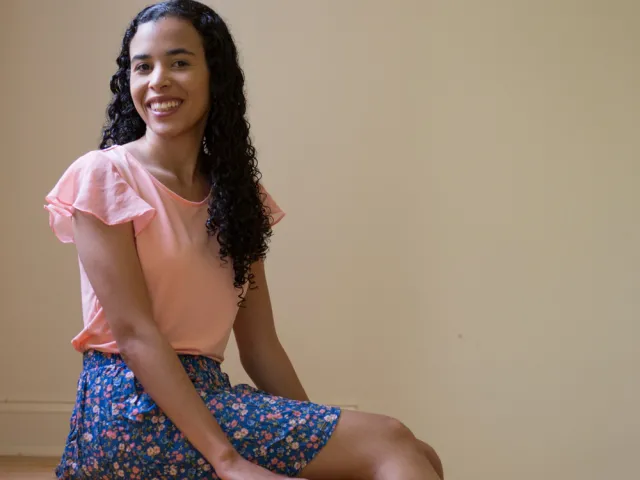
In high school, Kennedy Barber-Fraser ’19 disliked when boys spoke over her in class. In Smith, she found a college where that doesn’t happen. Photo: Peter Ross
Being raised in a culture that values women’s colleges, as Katherine Anderson ’21 was, doesn’t mean a teenager will want to attend one. Anderson, who grew up a short distance from both Smith and Mount Holyoke, started at a coed university where she was recruited for the swim team. She transferred to Smith the following year, even though attending a women’s college wasn’t a priority. “Many of the things I like about Smith—particularly the classroom environments, the housing system and the culture around athletics—are actually due to the fact that Smith is a women’s college” she said. “I just didn’t realize this when I was applying.”
It’s not always easy for an 18-year-old to say yes to a women’s college. Friends can question the decision or criticize based on stereotypes. During her senior year of high school, Faith Wykle ’21 gave a class presentation about women’s colleges in the 1960s. The audience included many of her friends. Someone asked, “Does this mean you’re looking at women’s colleges?” And then: “Isn’t everyone who goes to a women’s college a lesbian?”
Later, another student suggested Wykle’s selection of a women’s college made perfect sense because she was outspoken, even bossy. That characterization of ambitious, powerful women sounds familiar to McCartney, Smith’s president. In a recent visit with alumnae, she says, “We talked about the fact that almost all of us have been called something like ‘bossy’ in our lives. That’s a word reserved for women. [That attitude] just doesn’t exist here.”
Marketing a women’s college requires cutting through those stereotypes, but it also must address questions about the continuing value of single-sex education. After all, men’s colleges have nearly disappeared. Only a few all-male, secular four-year institutions remain in the United States, including Morehouse, a historically black college in Atlanta, and Wabash College in Indiana.
Smith’s marketing strategy has changed since 2001, when in a Smith Alumnae Quarterly story Audrey Smith discussed the need to “jump-start” applications. Strategies then included improved outreach to minority and international students, as well as promoting the college’s strong science programs. “We did not lead with ‘women’s college.’ It was ‘excellent residential liberal arts college,’” Smith recalls. “It’s become easier in the last couple of years to lead with that ‘women’s college’ message.”
It’s difficult to know if women’s colleges will keep growing in applicants and yield in the years ahead. But Audrey Smith now spends more time worrying about the future of residential liberal arts education in general. “The price is challenging. The number of high school graduates out there is declining,” she says. “The social forces arguing that college is indoctrinating people and you don’t need a college education are much, much more concerning to me.”
As long as there are enough young advocates and applicants like Carrie Lee Lancaster, Smith and other women’s colleges will thrive as settings that develop global leaders. The mission has kept up with the times, says Lancaster, whose grandmother and great-grandmother also attended women’s colleges. “I’m going back to what my grandmothers experienced, but in a completely different context. The relevance of women’s colleges is much different now,” she says. “Though valuable, it’s not only about educating mothers to be in the domestic sphere. It’s educating us to be people in the world.”
This story appears in the Fall 2019 issue of the Smith Alumnae Quarterly.
Smith Pledged to Give Me a Voice. It Did.
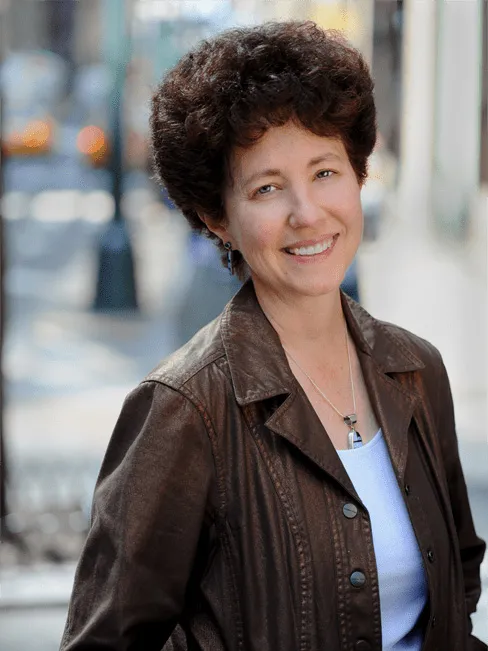
By Andrea Cooper ’83
Forty years ago, I flew alone from Chicago to Hartford, rode north on the bus to Northampton, then climbed the hill toward Smith, my electric typewriter case banging against my knee. It was my first time seeing the college I had chosen.
Women’s colleges and their promise of developing leaders appealed to me. I was a young feminist in the era of second-wave feminism, and in some gut sense I knew a women’s college could get me there, wherever “there” might be. Philosophy aside, Smith gave me the most scholarship money of the private colleges where I applied, so Smith it was.
One reason I headed to Elm Street was unique to me, though: My mother had been mentally ill as long as I knew her and I desperately needed healthy female role models. I needed to see what normal—let alone exceptional—looked like in a woman. I’m not sure I could have told you that when I applied, but I definitely realized it after I graduated.
At Smith I experienced my share of joys and difficulties, as most students do. (Chaucer convinced me to major in American studies instead of English.) In spite of the challenges, there’s no doubt Smith gave me what it pledged. It helped me understand I have a voice and the right to write these words.
Andrea Cooper ’83 writes for many national publications and is a frequent contributor to the Smith Alumnae Quarterly. Learn more about her journey at Salon.com.